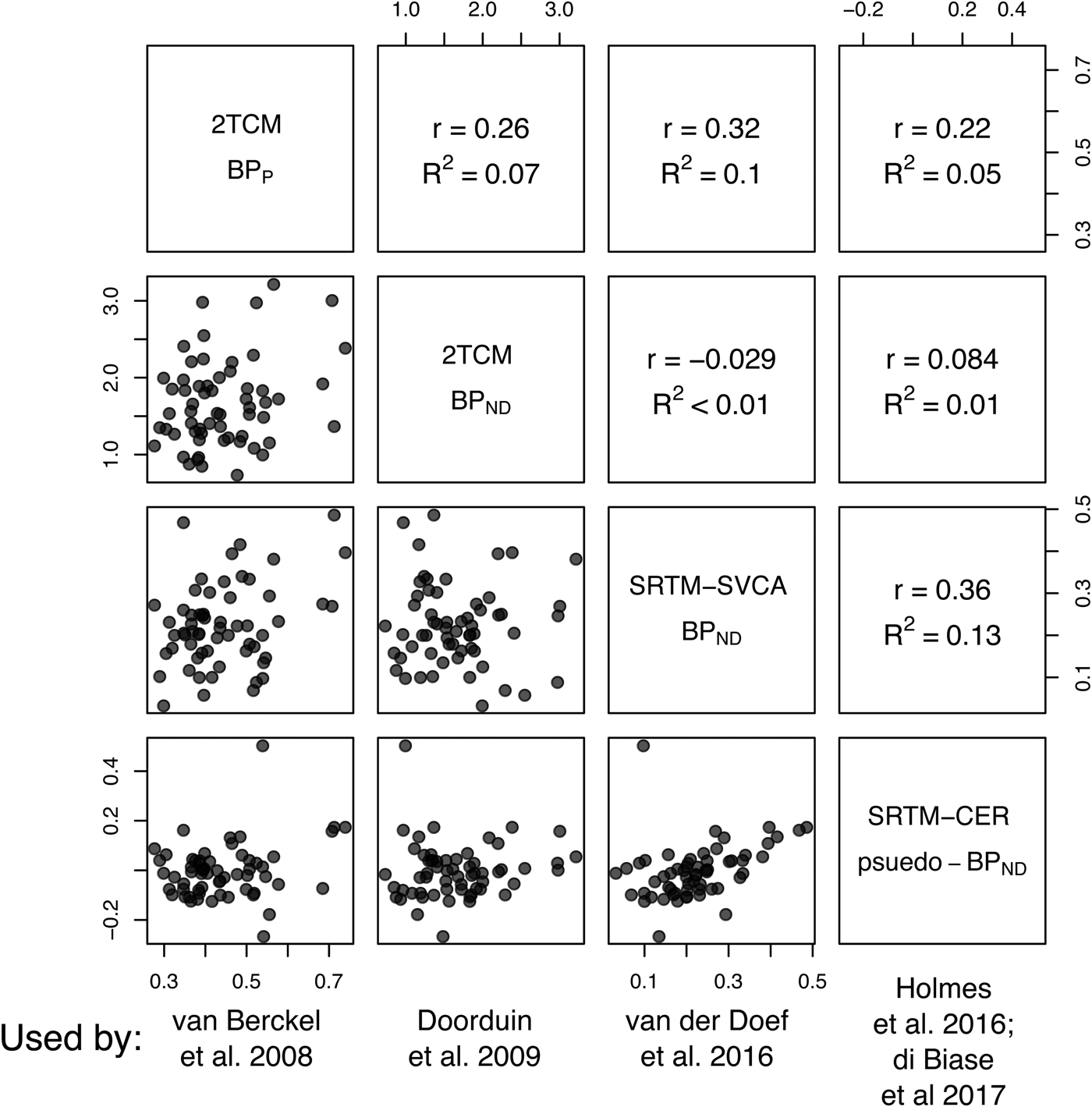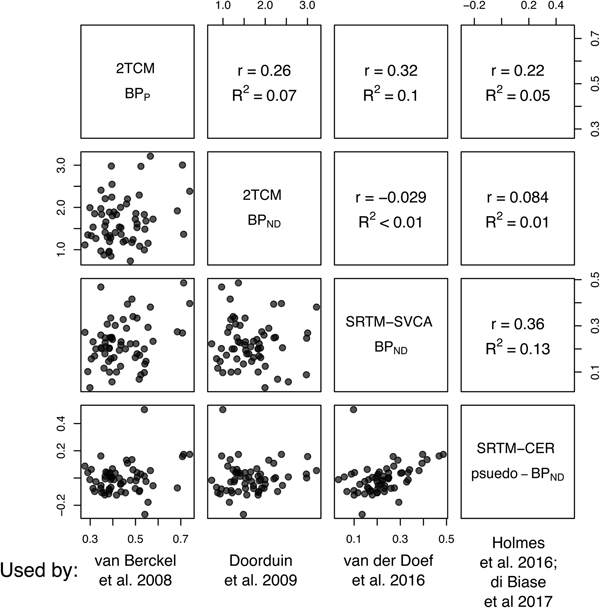The above mentioned article was published in Psychological Medicine with the captions for figs. 1 and 2 inadvertently swapped. The correct figures and their accompanying captions are listed below:

Fig. 1. The magnitude of the effect size and the measurement error of the studies included in the (R)-[11C]PK11195 meta-analysis by Marques et al. (left figure) show a high degree of association (r = 0.9). Potential reasons for such a shape are publication bias or inflated effect sizes in studies with unreliable outcomes and small sample sizes, leading to an inflated overall effect size. When Marques et al. corrected for this bias, the difference between healthy controls and patients with psychosis or schizophrenia was no longer statistically significant (right figure).

Fig. 2. The different outcomes used by the studies included in the (R)-[11C]PK11195 meta-analysis by Marques et al. show little to no association with one another. This figure presents pooled data from 12 (R)-[11C]PK11195 examinations of healthy controls from a set of different regions (whole gray matter, thalamus, frontal cortex, hippocampus and striatum).
Cambridge University Press apologises for this error.




